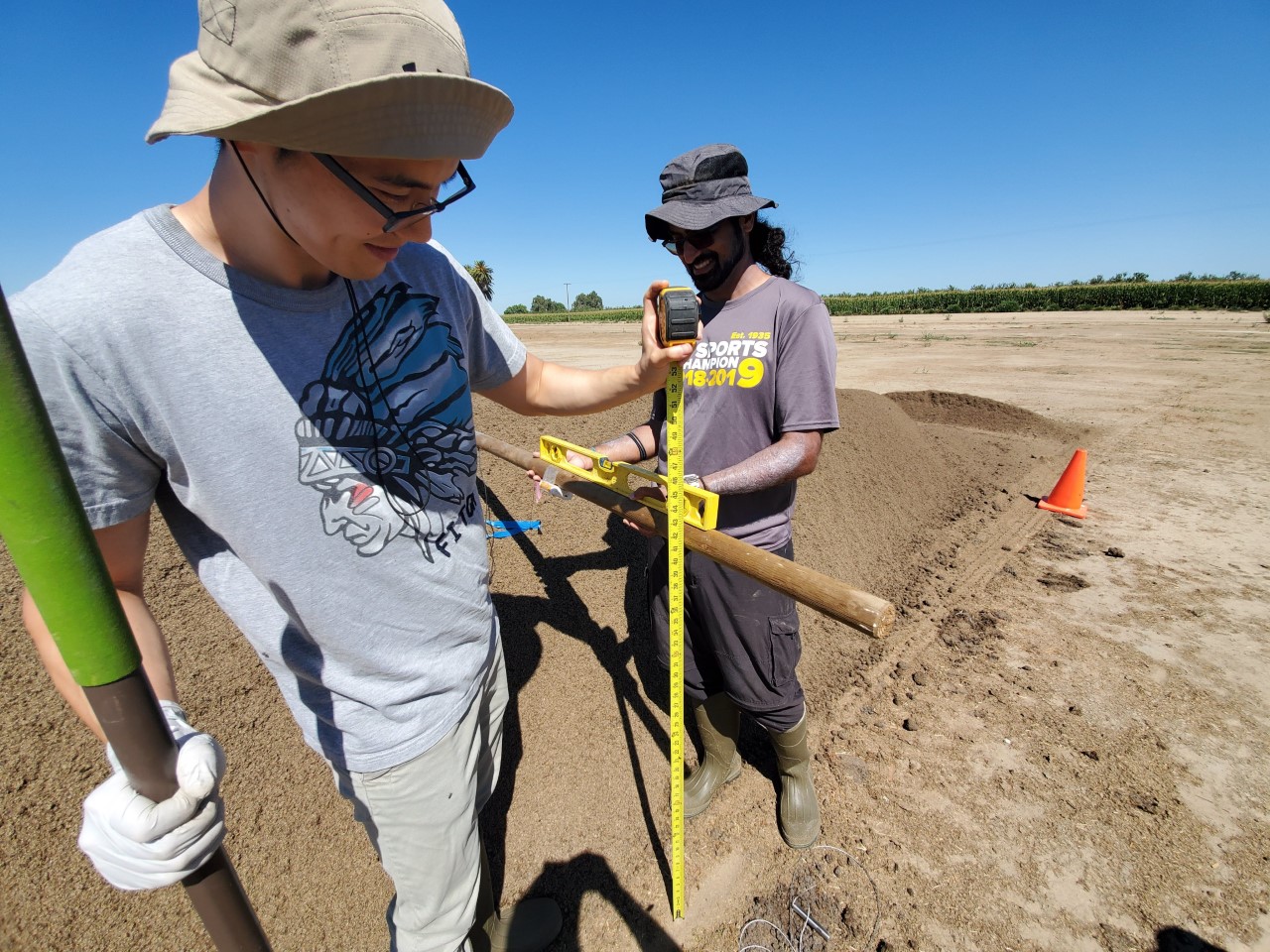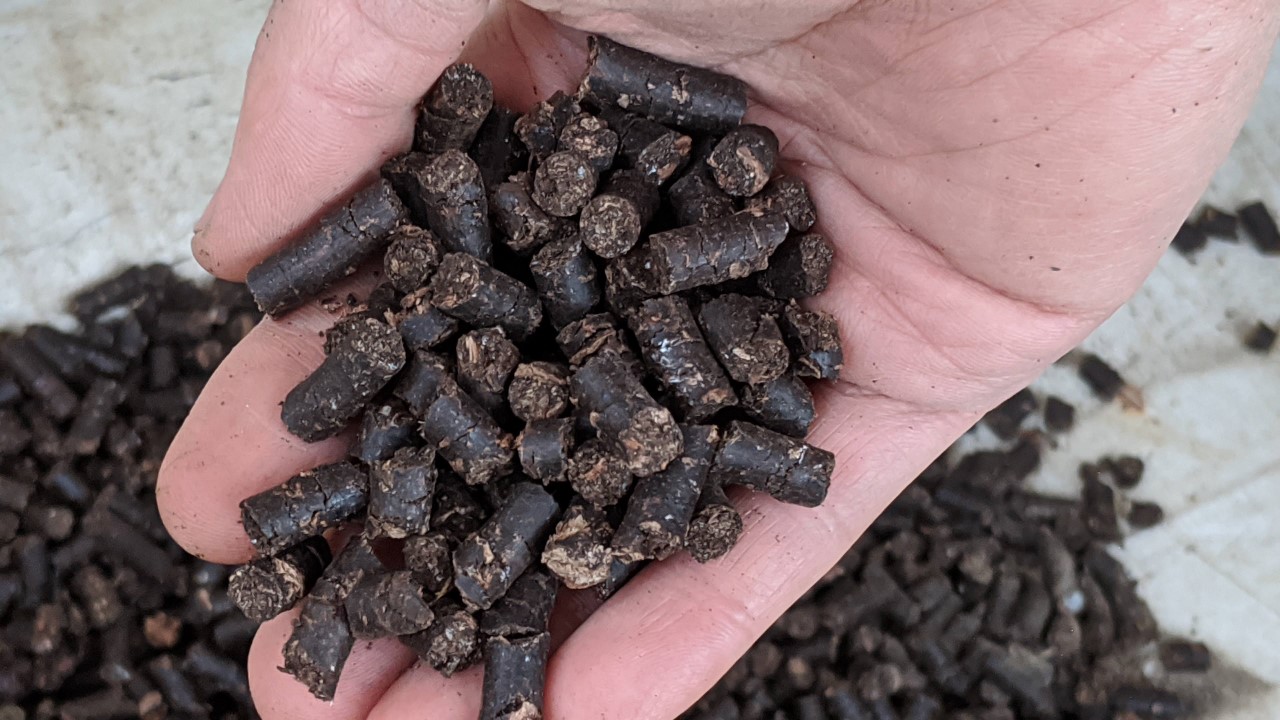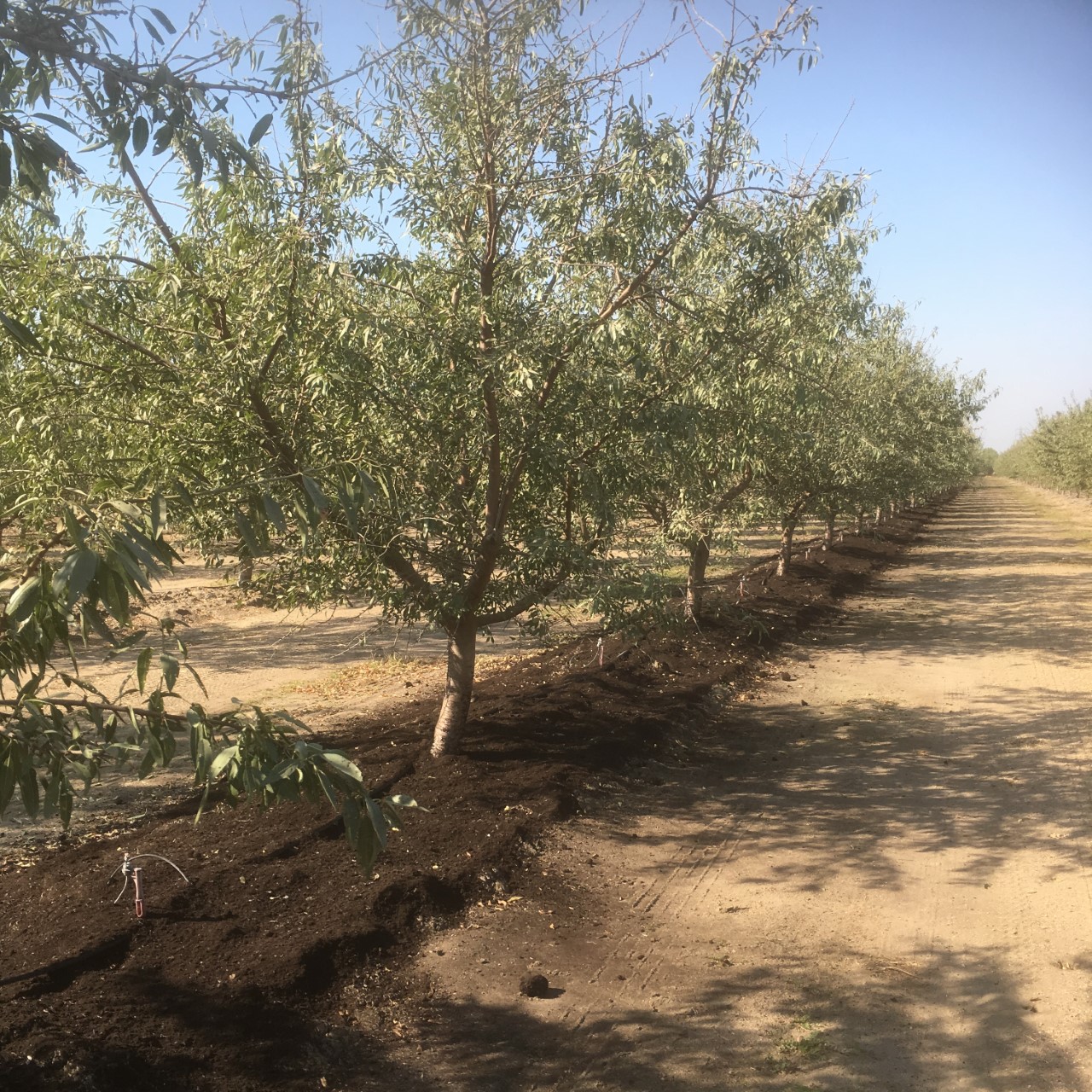
For decades, California’s two leading agricultural commodities have enjoyed a productive and synergistic relationship. Rather than decomposing in landfills, almond hulls and shells often find a home on Central Valley dairies where they are upcycled as a feed ingredient and bedding material for cows.
While the movement of almond coproducts from orchards to dairies is routine, ongoing research suggests that an even stronger relationship may be possible by sending one of dairy’s coproducts, manure-based compost, to almond orchards.
“We’re very excited about the partnership between the almond and dairy communities to better quantify the benefits of applying dairy compost to almond orchards,” said Guangwei Huang, associate director of Food Research and Technology at the Almond Board of California (ABC).
According to Huang, the research also looks at the feasibility of incorporating almond woody biomass, such as tree prunings, into dairy manure compost. The prospect not only has the potential to return economic and agronomic value to growers, but it may also provide a solution for sustainable disposal of woody biomass in the orchard.
Funded in part by ABC, the California Dairy Research Foundation (CDRF) and the California Department of Food and Agriculture’s Healthy Soils Initiative, the three-year study aims to measure the impacts on soil health and carbon sequestration (the intentional storage of carbon in the soil) from the use of compost derived from a mixture of dairy manure and almond woody biomass. Preliminary results show promise for almond growers, suggesting potential benefits such as diversification of plant nutrient sources, addition of organic material to the soil and improved water holding capacity in the tree root zone.
Finding Mutually Beneficial Solutions
Despite the differences in coproduct materials generated on their operations, almond growers and dairy farmers share a similar challenge of finding increasingly higher-value and environmentally friendly uses for their respective coproducts.
Whereas hulls and shells benefit from a more developed market thanks to the state’s dairy economy, options for dealing with almond woody biomass, especially tree prunings and sticks, are on the decline compared to a decade ago.
“Cogeneration plants used to take a significant amount of woody biomass from growers, hullers and shellers,” Huang said. “With changes in clean energy generation pricing, that outlet has been drastically curtailed for our growers, hullers and shellers.”
For growers, Huang notes that open field burning of tree prunings and sticks is a soon-to-be extinct option due to recent changes in air quality regulations. The California Air Resources Board unanimously approved a plan in February 2021 that will phase out nearly all agricultural burning in the San Joaquin Valley by 2025.
Meanwhile, milk producers are looking for more options to put manure to work as a natural fertilizer, a practice they have long used to grow forage crops for their cows.
“Dairy farmers know firsthand the benefit of using organic dairy manure, including compost, as a fertilizer and soil health builder,” said CDRF Director Denise Mullinax. “While many dairies can efficiently and effectively use all of the manure produced on their farms, some have the potential to export surplus manure for use as a compost and organic matter amendment to other farmers, such as almond growers.”
The proximity of almond orchards to dairy farms, which generate a steady supply of compost source material thanks to the more than 1.5 million dairy cows in the Central Valley, coupled with the annual production of woody biomass from orchard prunings by growers led ABC and CDRF to cooperate on the research.

Food Safety, Yield and Soil Emissions
A research team at UC Davis is nearing completion of its second year of a three-year study to determine the efficacy of using a dairy manure/woody biomass compost as a nutrient-rich and organic soil amendment in almond orchards.
However, prior to understanding the agronomic benefits of applying compost to the surface of an almond orchard, growers and handlers undoubtedly want to know if the practice is safe, especially since almonds are harvested off the ground where compost is applied.
“Our research included producing the compost and then characterizing the physical and chemical properties of that compost,” said Dr. Ruihong Zhang, the project’s principal investigator and research team leader. “Field measurements included a quality and safety step where we sampled for the detection of pathogens such as E. coli O157 and Salmonella.”
“We’re pleased to report that our pathogen study came out negative, where all the soil amendments we produced with dairy manure tested free from Salmonella and pathogenic E. coli.”
In July 2019, the UC research team started the process of developing two composts: One derived from dairy manure only and the other comprised of an 80% dairy manure and 20% almond stick-and-twig mix. Active composting took place over an eight- to ten-week period, where the material was monitored, turned and tested to ensure proper temperatures were reached.
“Some of the composted material was then pelletized so we could test different treatments in our almond orchard test block,” said Hossein Edalati, a member of the UC research team. “Five treatments were developed and applied to our test orchard in March 2020, including a manure-only compost, a manure-stick compost, a pelletized manure compost, a pelletized manure-stick compost and an unamended treatment.”
The treatments were applied to a randomized block of Independence almond trees at a rate of four dry tons per acre, which equated to a nitrogen, phosphorus and potassium (NPK) application of 100-28-72 lbs. per acre for the manure-only composts and 84-18-60 lbs. per acre for the manure-stick composts. Edalati noted that the difference in nutrient make-up between the manure-only and manure-stick composts is attributable to an increased carbon-to-nitrogen ratio in the manure-stick composts from the addition of the woody biomass.
“In addition to our year one finding that the compost and field samples were pathogen-free, no difference was observed in almond yield or carbon dioxide and nitrous oxide emissions (greenhouse gases) from the soil between the various treatments,” Edalati said.
As the Dr. Zhang-led team nears the completion of its second year of research, various compost treatments have been applied to the test orchard and in-field measurements continue. Additional measurements will be taken from this year’s harvest and a research update provided to the almond and dairy industries via ABC and CDRF.
Positive Impact of Compost Indicated
Another ABC-funded research project indicates that dairy manure compost may be a viable option for supplementing, or even partially substituting, synthetic fertilizers in almond orchards.
Since 2016, Dr. Sat Darshan S. Khalsa of UC Davis has led a research project to determine the effects of an annual application of four dry tons per acre of composted dairy manure on an almond orchard.
“Compost tends to have a low non-organic nitrogen content, but a high organic nitrogen content, which takes time to decompose and become available,” Dr. Khalsa said. “We saw that 70% to 80% of the compost visibly broke down on the surface, translating to 5% to 10% nitrogen availability for the growing season.”
Dr. Khalsa notes that one would naturally wonder what happened to the rest of the nitrogen in the compost: If only a small fraction of the compost’s nitrogen is available for the growing season, does the vast majority leach through the root zone and potentially into groundwater?
“We showed that the nitrogen from compost isn’t leaching,” Dr. Khalsa said. “Rather, the nitrogen is building up in the soil organic matter like an investment for future use.”
This investment may lead to growers being able to reduce applications of synthetic nitrogen by up to 20%, according to Dr. Khalsa.
Dr. Khalsa’s review of soil moisture samples from orchards that received dairy manure compost versus those that didn’t also showed higher levels of soil moisture in the top 10 centimeters of the soil profile down to about 50 centimeters of soil depth, indicating improved water holding capacity in the root zone due to the buildup of soil organic material.
Measurements of stem water potential also revealed that trees experienced lower stress where soil moisture content was higher in the root zone.
ABC’s Huang notes that research projects such as Dr. Khalsa’s and Dr. Zhang’s are part of the organization’s continued effort to assist growers in improving their operations both economically and agronomically.
“We are excited about these research projects and their potential to unlock new and innovative ways to move the almond community forward,” Huang said. “We look forward to updating growers and handlers as more results become available.”

Resources
“Carbon Sequestration and Soil Health Improvement in Almond Orchards Using Dairy Manure and Woody Biomass Compost,” Almond Board of California 2020 Research Update
“Effect of Partial Fertilizer Substitution with Organic Matter Amendments on Nutrient Cycling,” Almond Board of California 2020 Research Update
“Impact of Organic Matter Amendments on Soil and Tree Water Status in a California Orchard” Lepsch H, et al. (2019) Agricultural Water Management










